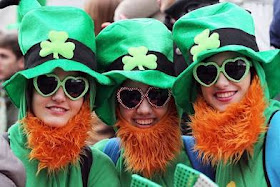Origin of St. Patrick's Day
St. Patrick's Day, celebrated on March 17th, commemorates the death of St. Patrick, the patron saint of Ireland, and evolved from a religious feast day to a celebration of Irish culture, marked by parades, green attire, and shamrocks.
Here's a more detailed look at the origins and evolution of St. Patrick's Day:
The Religious Roots:
- Saint Patrick, born in Roman Britain, was captured and taken to Ireland as a slave at age 16, where he spent six years before escaping.
- After his escape, he became a priest and returned to Ireland as a missionary, playing a key role in converting the Irish people to Christianity.
- St. Patrick died on March 17th, and the Catholic Church established a feast day in his honor on that date.
- St. Patrick became Ireland's patron saint and is celebrated by the Catholic Church, Anglican Communion, Eastern Orthodox Church, and Lutheran Church.
The Evolution into a Cultural Celebration:
- As Irish people emigrated to other parts of the world, they brought their traditions and celebrations of St. Patrick's Day with them.
- St. Patrick's Day celebrations, particularly parades and festivals, became a way for Irish communities to showcase their heritage and culture.
- The shamrock, a three-leafed clover, became a symbol of St. Patrick, representing the Holy Trinity, and the color green gained prominence as an emblem of Irish identity.
- Over time, St. Patrick's Day evolved into a largely secular holiday, with traditions like wearing green, drinking green beer, and celebrating with parades and festivals becoming common.
- The first documented St. Patrick's Day celebration in America took place in Boston in 1737, and New York City held its first parade in 1762.









No comments:
Post a Comment